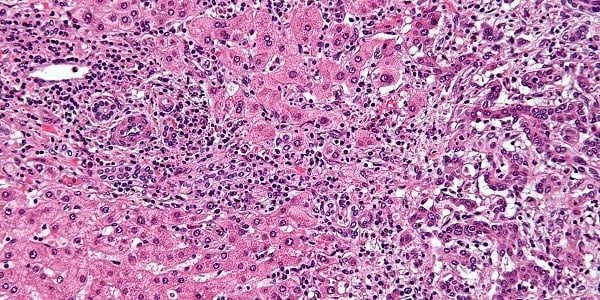Cancer of the bile ducts

Bile duct cancer is a malignant neoplasm that arises in the thin tubes through which the digestive fluid bile passes through the liver.
The disease is also called cholangiocarcinoma. It occurs very rarely and mostly in people over 50 years of age.
Cholangiocarcinoma can cause symptoms such as jaundice, severe itching and white stools. The disease is aggressive, develops very quickly and is difficult to treat.
What are the symptoms?
Usually, malignancy progresses unnoticed until it blocks the flow of bile through the liver, when in most cases it is at an advanced stage.
Blocking the flow of bile causes it to back up into the blood and body tissues, causing the characteristic symptoms to appear:
• Jaundice – yellowing of the skin and the whites of the eyes;
• Darkening of urine;
• Fatigue;
• Loss of appetite;
• Unexplained weight loss;
• Abdominal pain – most people feel a dull pain in the upper right part of the abdomen;
• Increased body temperature – 38 degrees Celsius or higher;
• Chills;
• Night sweats;
Seek medical attention if you are jaundiced, although it is very unlikely that you have cholangiocarcinoma.
But in almost all cases, jaundice is a sign of diseases or disturbances in the function of the liver, such as hepatitis, for example.
What are the causes?
The exact cause of the disease is not known, although several risk factors have been identified.
Cancer starts with a change in the coding information in cells that tells them when to grow and replicate. The code is recognized by deoxyribonucleic acid /DNA/, which is found in all human cells.
A change in the cellular code, known as a mutation, can change the instructions that control cell growth.
The mutation can instruct cells to keep growing instead of stopping when they should. This leads to the uncontrollable multiplication of cells and the formation of a neoplasm known as a tumor.
If left untreated, the cancer grows rapidly and may spread to other parts of the body.
There are two ways that cholangiocarcinoma can spread:
• Direct – cancer affects tissues outside the bile ducts and surrounding organs, such as the liver and its blood vessels, pancreas or gallbladder.
• Indirectly – malignant cells spread through the bloodstream or lymph to other parts of the body, such as the lungs and colon.
A number of factors have been identified that increase the risk of developing the disease, such as:
• Primary sclerosing cholangitis /PSK/ – a rare form of liver disease, which is characterized by chronic inflammation of the liver. It usually occurs at the age of 30-50 years. In most cases, PSC is associated with chronic inflammation of the large intestine /ulcerative colitis/. It is not known exactly how many people with PSC will develop cholangiocarcinoma, but estimates vary between 5 and 35%.
• According to some studies, smokers also fall into the risk group.
Biliary tract cancer treatment
Many cases of the disease cannot be effectively cured. Instead, treatment is aimed at relieving symptoms.
In cases where the cancer is in stage I or II, it is possible to apply surgical therapy by removing an affected part of the gallbladder and possibly part of the liver or gallbladder.
When the disease has reached stage III, the chances of success will depend on how much of the lymph nodes are affected.



